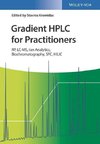
-
 Anglický jazyk
Anglický jazyk
Design and synthesis of Fluorochemosensors and their cation recognition study
Autor: Ajay Desai
Doctoral Thesis / Dissertation from the year 2016 in the subject Chemistry - General, grade: 9.0, , language: English, abstract: This thesis deals with Fluorochemosensors. Fluorescence spectroscopy and ultraviolet techniques have been applied to various... Viac o knihe
Na objednávku
25.92 €
bežná cena: 28.80 €
O knihe
Doctoral Thesis / Dissertation from the year 2016 in the subject Chemistry - General, grade: 9.0, , language: English, abstract: This thesis deals with Fluorochemosensors. Fluorescence spectroscopy and ultraviolet techniques have been applied to various analytical, bio-analytical, environmental, medical and forensic investigations. Several analytical methods that are offered for recognition of target concerned such that flame photometry, AAS, HPLC, mass spectrometry, ion sensitive electrode, microprobe analysis, neutron activation analysis, have been developed. But these methods are expensive and time uncontrollable process that involves complicated instrumentation and do not allow permanent monitoring. When compared to absorption techniques, flourimetric method is more sensitive and selective and rapidly performed. In nature, any compound analysed by using a suitable analytical technique which basically depends on the nature and properties of the target compound. If the target compound exhibit phenomenon called as Luminescence where the emission of electromagnetic radiation of longer wavelength to that of absorbed radiation can be seen are analysed by using the modern spectroscopic technique called as "flourimetry"
.
Hence, significant hard works are life form complete to develop selective fluorescent sensor for recognition of targeted species. To blind date different fluorescent molecular sensors with different excitation and emission wavelengths comprise be employed such like coumarin, 1,8-naphthamide, pyrene, xanthenes, cynine, squaraine, boron dipyrromethene difuoride, nitrobenzofurazan etc.
In outline, cinnamaldehyde - rhodamine based signalling systems were designed and synthesized for the selective recognition of Fe+3 ions. The cinnamaldehyde molecule was used as a recognition moiety and rhodamine-B was used as a signalling moiety. The excellent fluorescent response to Fe+3 in ACN solution can be detected even by the naked eye, which provides a facile method for the visual detection of Fe+3. Complexation of the Fe+3 ions opens the spirolactum ring of rhodamine moieties to produce specific color change as well as fluorescence development.
- Vydavateľstvo: GRIN Verlag
- Rok vydania: 2019
- Formát: Paperback
- Rozmer: 210 x 148 mm
- Jazyk: Anglický jazyk
- ISBN: 9783668945296



 Nemecký jazyk
Nemecký jazyk 








